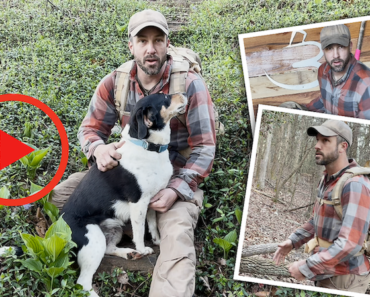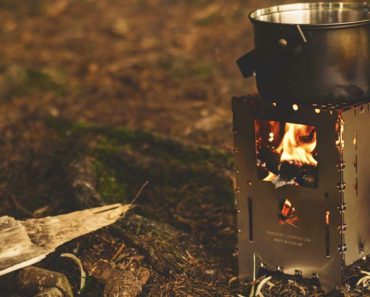We’ve all seen in disaster movies how a catastrophic event has the potential to disrupt and render inaccessible the availability of a reliable and advanced medical system. However, the scripts of such movies are based on real-life events. In such a scenario, it becomes imperative for individuals who possess both knowledge and resources to step forward and assume the responsibility of caring for the sick and wounded.
This responsibility is likely to fall upon you, who must be prepared to tackle the challenge. In normal circumstances, a caregiver is tasked with providing care to only one individual. However, during an extreme situation where chaos ensues, it is possible that multiple casualties may arise simultaneously. This situation is referred to as a mass casualty incident (MCI) and requires a level of preparedness and skill set that goes beyond the traditional approach to caregiving.
During a mass casualty incident, the existing medical resources may not be sufficient to address the number and gravity of injuries that have occurred. This can range from a large-scale car accident to a catastrophic natural disaster like the earthquake that recently hit Turkey or even a terrorist attack.
When medical assistance is limited, it becomes crucial for first responders to make difficult decisions on prioritizing care for victims. This prioritization process is known as triage, which is derived from the French word “trier,” meaning to sort.
The objective of triage during MCI is to maximize the overall positive impact for the greatest number of people rather than to provide the best possible care for each individual. This may mean having to allocate resources and attention to those who are in the most critical condition, have the highest chances of survival or have the most severe injuries that can be treated with the limited resources available.
Triage is a challenging and critical aspect of emergency medical response, as it requires medical personnel to quickly assess the medical needs of multiple victims and prioritize their treatment based on the available resources.
One example of a recent MCI in the United States where triage was necessary was the mass shooting that occurred at a grocery store in Boulder, Colorado, on March 22, 2021. After the shooting incident, multiple victims were transported to nearby hospitals, and triage procedures were implemented to quickly assess and prioritize the medical needs of each individual.
In this type of situation, triage is a crucial step in ensuring that the most critically injured individuals receive prompt medical attention and improve their chances of survival. In lay terms, triage may be described as “sacrificing” the few to save the many.
The five rules of successful triage
As the first responder to a mass casualty incident, you become the temporary incident commander. In this role, it’s important to take the necessary steps to manage the situation effectively. To do so, you must follow the 5 S’s of MCI triage:
Safety assessment:
The first step in handling a mass casualty incident is to prioritize safety. Before rushing to help the injured, the first responder must assess the scene and ensure that it is safe to enter. This includes checking for any ongoing threats, such as a fire or an active shooter, that may put the responder and others in danger. If the scene is not secure, there should be measures implemented to make it safe, or if possible, the injured should be moved without causing harm to both the victims and the caregivers.
Sizing up the scene:
The next step is to conduct a size-up of the scene, gathering information about the nature of the incident, the number and severity of injuries, and the location of the victims. This information is crucial in determining the scope of the incident and the resources needed to respond effectively. This requires high analytical thinking and a strong mindset to control impulses and emotions.
Sending for help:
Once the initial assessment is complete, the first responder should send for help by calling emergency services and providing detailed information about the situation. This includes the type of incident, the number of victims, and any special equipment required. The information provided will help emergency services quickly dispatch the necessary resources to the scene. It is highly unlikely that the person first at the scene may provide first aid to everyone or possess the knowledge to do so. Help should always be called to save as many people as possible.
Setting up areas for the injured
In addition to calling for help, you should also determine the most suitable areas for the injured to receive further evaluation and treatment. This may involve establishing triage and treatment stations within a safe and accessible area.
Furthermore, you should also determine the appropriate entry and exit points for victims who require immediate transport to medical facilities. If you have access to a large number of helpers at the scene, it is important to assign clear and concise duties in terms of further triage, treatment, and transport.
Victims should always be supervised because they may be in a state of shock and panic, and often times this may lead to further injuries. A disoriented and injured person in a car pileup may end up in ongoing traffic and be killed.
Starting the triage
In order to begin primary triage, the START method should be employed. START, which stands for Simple Triage And Rapid Treatment, is a system that prioritizes patients based on the severity of their injuries. The primary goal during this first round of triage is to quickly assess each patient and determine their priority level.
This process should be performed efficiently and quickly, with a goal of no more than 30 seconds per patient. It is important to note that the focus during this stage is not on providing extensive medical treatment but rather on identifying the priority level of each individual in need of care.
The triage levels and their importance
The primary triage evaluation focuses primarily on evaluating the vital signs of the victims, which are represented by the RPMs: Respirations, Pulse/Perfusion, and Mental Status. The assessment should be performed quickly, ideally in around 30 seconds per patient, without providing extensive treatment for the injuries.
The objective of this evaluation is to assign a priority level to each patient, which will help to determine the order in which they should receive medical attention. It is worth noting that the control of severe bleeding and the clearance of airways may be the only treatments performed during this stage of triage.
There is no universally accepted standard for triage levels; however, they are often categorized by color for easier identification.
Red (immediate assistance) – The most critical patients, who will likely not survive without immediate medical attention, are given the highest priority for treatment. This includes individuals with severe hemorrhages or internal bleeding who require prompt attention to have a chance at survival.
Yellow (delayed assistance) – The victim requires medical attention within a time frame of two to four hours. Their injuries may escalate to a potentially life-threatening situation if left untreated, but they can wait for treatment after those with higher priority (Red Tags) have received care. For instance, an open fracture without significant bleeding falls under this category.
Green (minimal assistance) – The victim has relatively stable injuries and is able to walk but may still require some medical attention (such as cuts or bruises). These are often called the walking wounded, and as previously said, they should be supervised because their state of mind can lead to further injuries.
Black (assistance is of no use) – The victim has either passed away, or it is unlikely they will survive, such as in the case of a fatal head injury or multiple severe chest wounds. In such cases, there is not much the first responder can do, and they must accept the loss and move to the next victim.
Knowing the RPMS is crucial during triage
Respirations
Check the breathing of your patient. If there is no breathing, reposition their head by tilting it back and lifting their chin to open the airway. If possible, insert an airway to help the patient breathe. Keep in mind that during an MCI triage situation, the normal rule of avoiding any movement that may cause cervical spine injury is temporarily ignored.
If the airway is opened and the patient still isn’t breathing, label them as a black priority. On the other hand, if the patient starts breathing after the airway is opened or if their breathing rate is more than 30 breaths per minute, label them as a red priority. If the breathing rate is less than 30 breaths per minute, proceed to evaluate the patient’s pulse.
Pulse
The next step in triage is to assess the circulation of the patient. To do this, check for a pulse on the wrist, as it usually indicates a blood pressure of 80 or higher. Another quick test is to check the capillary refill time (CRT). Apply pressure to the nail bed or finger pad and quickly remove it. Normally, the color will change temporarily before returning to its normal color within two seconds.
If it is difficult to feel a pulse or the nail bed color takes longer than two seconds to return, the patient should be tagged red. A prolonged CRT could be an indicator of shock, although external factors such as extreme cold or dehydration may affect the results. If the pulse is present and the CRT is normal, proceed to assess the patient’s mental status.
Mental status
The next step in the triage process is to assess the victim’s mental status. Can the patient understand and follow basic commands, such as “Squeeze my hand”?
If the respirations are not excessively fast and circulation is normal, but the person is unconscious or disoriented, they should be tagged as Red.
If they are able to comprehend and comply with commands, they should be tagged Yellow if they are unable to stand up or Green if they are able to.
An easy way to remember the RPMs (Respirations, Pulse, Mental status) is through the mnemonic “30-2-Can Do”. This reminds you to check for 30 respirations per minute, a 2-second Capillary Refill Time, and the ability to follow commands. By using RPMs, you can assess the triage level in less than 30 seconds.
If the patient fails any of the RPM checks, they should be tagged Red. In case of any ambiguity, always choose the highest priority triage level. If you are unsure between Yellow and Red, it is best to tag the patient Red.
Concluding
In non-emergency situations, modern healthcare facilities and emergency response teams provide quick access to advanced medical services, such as ambulances, helicopters, and specialized trauma units. These resources often result in improved outcomes compared to a survival scenario with limited resources.
However, in the absence of modern medical care, it is important to consider the potential outcome for those in need of medical attention. By examining a list of victims, it becomes clear who may be more likely to survive without immediate access to advanced medical services.




























